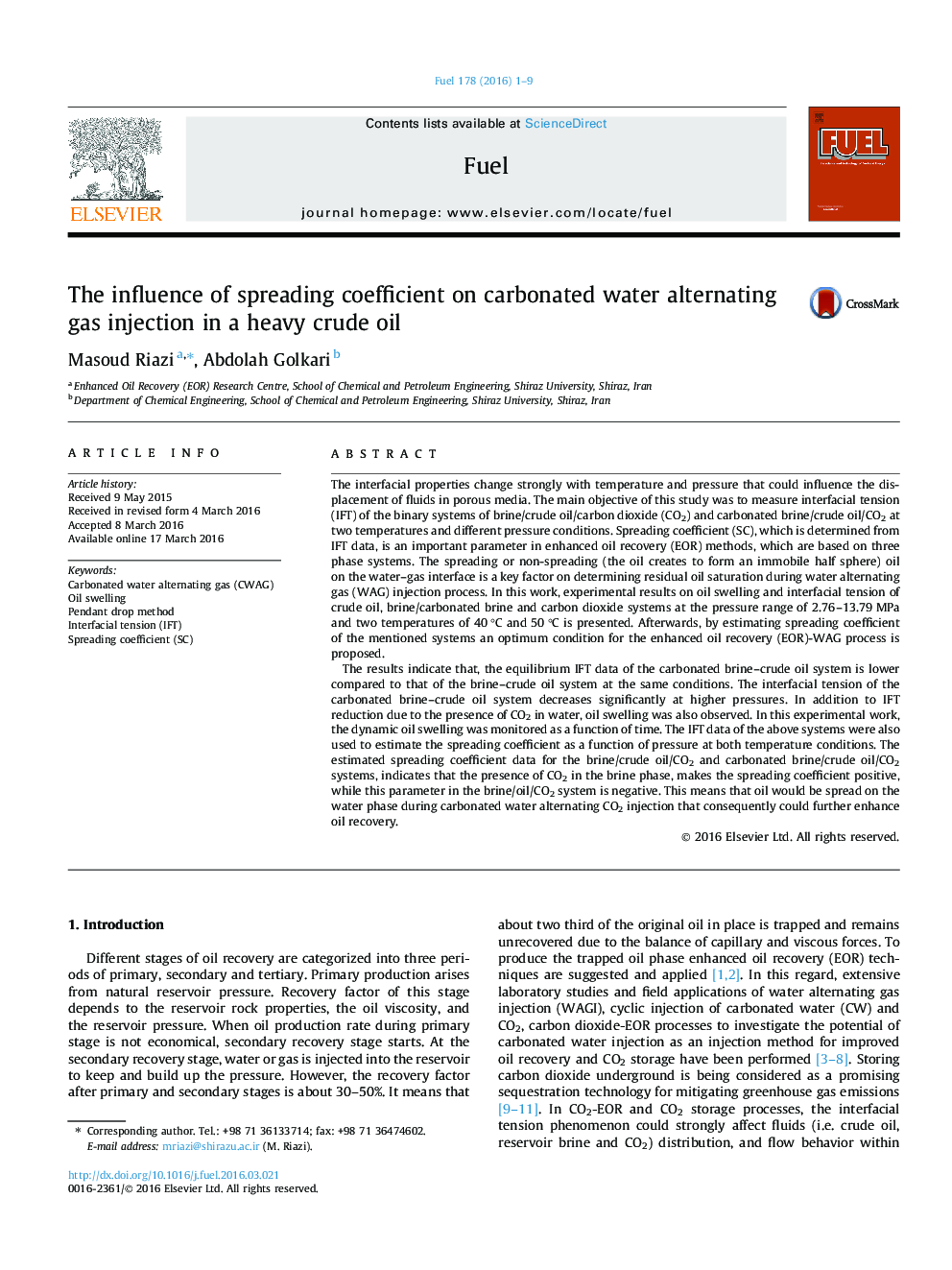| Article ID | Journal | Published Year | Pages | File Type |
|---|---|---|---|---|
| 204992 | Fuel | 2016 | 9 Pages |
The interfacial properties change strongly with temperature and pressure that could influence the displacement of fluids in porous media. The main objective of this study was to measure interfacial tension (IFT) of the binary systems of brine/crude oil/carbon dioxide (CO2) and carbonated brine/crude oil/CO2 at two temperatures and different pressure conditions. Spreading coefficient (SC), which is determined from IFT data, is an important parameter in enhanced oil recovery (EOR) methods, which are based on three phase systems. The spreading or non-spreading (the oil creates to form an immobile half sphere) oil on the water–gas interface is a key factor on determining residual oil saturation during water alternating gas (WAG) injection process. In this work, experimental results on oil swelling and interfacial tension of crude oil, brine/carbonated brine and carbon dioxide systems at the pressure range of 2.76–13.79 MPa and two temperatures of 40 °C and 50 °C is presented. Afterwards, by estimating spreading coefficient of the mentioned systems an optimum condition for the enhanced oil recovery (EOR)-WAG process is proposed.The results indicate that, the equilibrium IFT data of the carbonated brine–crude oil system is lower compared to that of the brine–crude oil system at the same conditions. The interfacial tension of the carbonated brine–crude oil system decreases significantly at higher pressures. In addition to IFT reduction due to the presence of CO2 in water, oil swelling was also observed. In this experimental work, the dynamic oil swelling was monitored as a function of time. The IFT data of the above systems were also used to estimate the spreading coefficient as a function of pressure at both temperature conditions. The estimated spreading coefficient data for the brine/crude oil/CO2 and carbonated brine/crude oil/CO2 systems, indicates that the presence of CO2 in the brine phase, makes the spreading coefficient positive, while this parameter in the brine/oil/CO2 system is negative. This means that oil would be spread on the water phase during carbonated water alternating CO2 injection that consequently could further enhance oil recovery.
